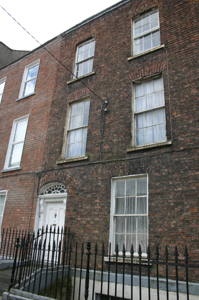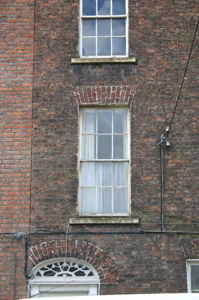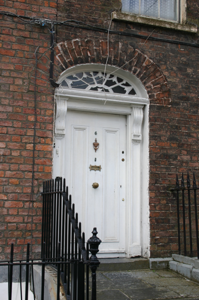Survey Data
Reg No
21517123
Rating
Regional
Categories of Special Interest
Architectural, Artistic
Original Use
House
In Use As
House
Date
1840 - 1860
Coordinates
157207, 156526
Date Recorded
16/07/2005
Date Updated
--/--/--
Description
Terraced two-bay three-storey over basement red brick house, built c. 1850, with a two-storey over basement return to rear. Pitched artificial slate roof concealed to front behind parapet wall, with rendered and red brick chimneystack to party walls, both having moulded clay pots. Red brick front elevation laid in Flemish bond with lime mortar pointing; rendered basement elevation and painted plinth course delineating ground floor level; lead flashed parapet coping; render rear and return elevation. Square-headed window openings, red brick flat arches, patent rendered reveals with varying degrees of intactness, painted limestone sills; original six-over-six timber sash windows to façade; historic glass surviving. Three-centred arch door opening, with red brick arch, patent rendered reveals, and inset timber doorcase comprising flat-panelled uprights, profiled console brackets joined by profiled lintel, with original webbed fanlight above; flat-panelled timber door with two vertical format panels. Limestone flagged front door platform bridges basement area, with historic cast-iron bootscraper. Basement area enclosed by limestone plinth wall with wrought-iron railings having Neo-classical cast-iron rail posts with pineapple finials and wrought-iron arrow head railing finials. Intact rubble limestone rear site boundary wall.
Appraisal
This house forms one of a terrace of six houses which are of a modest scale when compared with the O'Connell Street (formerly George's Street) terraces. Newenham Street is named after Rev. Edward Newenham Hoare, who built the Trinity Church of Ireland Church.







